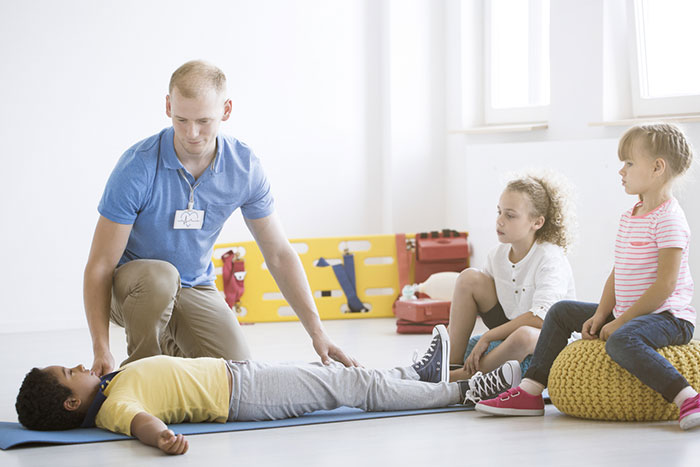Many people may be concerned about using a defibrillator on young children and infants, however, it is important to know that AEDs are safe and when combined with CPR, are the best way to treat a young child in sudden cardiac arrest (SCA). Safety Dave is a leading Australian supplier of high quality safety devices including AEDs. If you are looking for TPMS, reversing cameras, a portable defibrillator or a workplace defibrillator, we have everything you need to stay safe, and potentially save lives. Here we will look at using a portable AED defibrillator in the case of a paediatric sudden cardiac arrest.
Early Defibrillation Increases the Chances of Survival
While SCA is rare in young children outside of a hospital environment, it can happen. Young children and infants have delicate systems; it is critical to get their heart restarted quickly. When an AED is used before the arrival of paramedics, the survival rate is over 60%. An AED, even if it has no paediatric setting, cannot hurt the child and will not administer a shock unless it is required. It is the best chance for a child or infant to survive, so do not hesitate to use one. For every 1-minute delay in defibrillation, the survival rate can decrease by 7% to 10%.
Paediatric Defibrillation Dosage
As young children are much smaller than adults, they require a lower energy setting for delivery of the same defibrillation dose (J/kg). AEDs designed for use in adults have energy levels capable of delivering a substantially higher dose (J/kg) to young children. Decades ago, use of the same defibrillation dose in both children and adults seemed potentially dangerous. After a large clinical study of an effective defibrillation dose for children, the recommendation of 2 J/kg became the guideline which is still current today. It’s important to note that although decades of clinical use confirm that 2 J/kg is effective, there has been no further research that confirms it as the most effective dose.
How to Use an AED on an Infant or Child
SCA occurs with little or no warning, and can affect fit and healthy children.
- Recognise SCA – a child in sudden cardiac arrest will suddenly fall unconscious, stop breathing, become unresponsive and have no pulse or heartbeat.
- Call an ambulance immediately – the operator will stay on the line with you to provide assistance.
- Start CPR before retrieving the defibrillator – this will ensure that blood is supplied to the brain and other vital organs while the AED is retrieved. Effective CPR prolongs the period that the heart can be restarted by an AED, and without it, the chances of survival drop every minute. For infants, CPR involves placing two fingers on the centre of the chest and compressing firmly at 100-120 beats per minute.
- Get the AED and turn it on – AEDs are designed for anyone to use, so it will give clear instructions to follow. Some AEDs have paediatric electrode pads or a switch to change them to a paediatric setting. If your AED does not have this, it’s important that you use it anyway.
- Follow instructions – The defibrillator will provide step-by-step voice prompts to tell you how to place the electrode pads and what to do next. If you only have adult pads, place one pad in the centre of the child’s chest, and the other one in the centre of their back. The AED will monitor the child’s heart rhythm and supply a shock as required. It will instruct you when to commence CPR and continue to deliver shocks until paramedics arrive.
For a High Quality, Affordable Portable Defibrillator, You Can Rely on Safety Dave
Established in 2002 with the aim of providing all Australians with easy access to premium safety equipment, Safety Dave has become a trusted choice for safety equipment that performs at the highest Australian standards, at highly competitive prices. For first aid goods, fire safety products, AEDs, reversing cameras and more, check out our huge range online now. For expert advice on the right products for your needs, call our friendly team on 1800 072 338.


